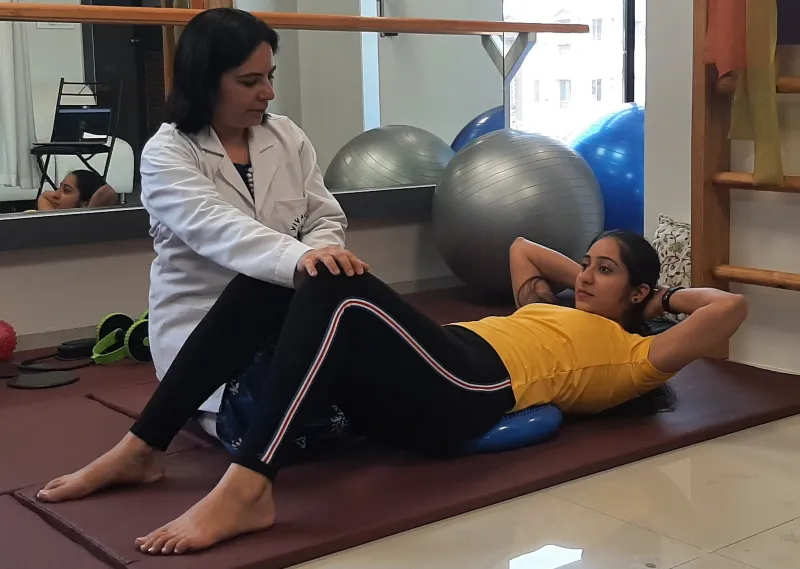Exercise therapy is a plan of physiotherapy exercises designed and prescribed to facilitate the patients to recover from diseases and any conditions that disturb their movement and activity of daily life. This therapy is also used for maintaining a state of well‐being and reduce pain. The primary objectives of exercise therapy are:
- Promote activity and minimize the effects of inactivity, increased independence
- Increase the normal range of motion.
- Improve strength in the weak muscles.
- Improve the performance in daily activities.
- Enable ambulation.
- Release contracted muscles, tendons, and fascia.
- Improve circulation.
- Enhance respiratory capacity.
- Improve coordination.
- Reduce rigidity.
- Improve balance.
- Promote relaxation.
- Increased motor or sensory function.
The designing of custom treatment plan for patients involves assessment of the patient’s physical capability, body type and body activity levels. Examples of therapeutic exercises include:
- Range of movement exercises (passive, active assisted, active resisted, assisted resisted & free exercises)
- Passive exercises: The physiotherapist performs these movements for the patients. The direction and range of the movements are the same as those performed in the active movements. The physiotherapist moves the joint through the existing free range and within the limits of pain.
- Active assisted exercises: In this type of exercise, the patient tries to perform the movement by himself/herself. However, his/her muscular action is insufficient for the production or control of full range of movement. Hence as external force needs to be added to complete these exercises. As the muscle power increases with continued therapy, the assistance given is proportionately reduced over time.
- Active resisted exercises: The physiotherapist applies external force to the patient’s body levers to oppose the force of muscular contraction and helps in increasing the muscle power and hypertrophy.
- Assisted resisted exercise: This type of exercise constitutes a combination of assistance and resistance during a single movement.
- Free exercises: Free exercises are performed by the patient’s own muscular efforts without any external assistance or resistance – other than that of gravity.
- Core strengthening: The core includes abdominal muscles, low back muscles and pelvic region muscles. Keeping these muscles strong helps to stabilize your body, support your spine, and enhance your overall fitness. In core strengthening exercise regime, the therapist gives you an individualized exercise plan to strengthen your core muscles.
- Posture therapy
- Therapeutic Yoga stretches: Therapeutic Yoga (or Yoga Therapy) is a blend of Physical postures, Breathing techniques, Meditation and guided imagery to improve physical and mental health. The holistic approach of yoga therapy helps in integration of mind, body and spirit.

